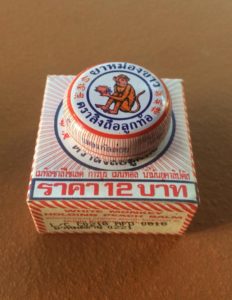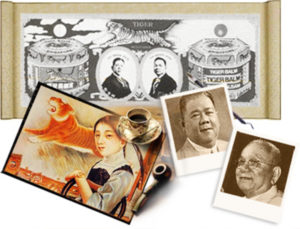Tigerbalm – The Silver Bullett from Asia
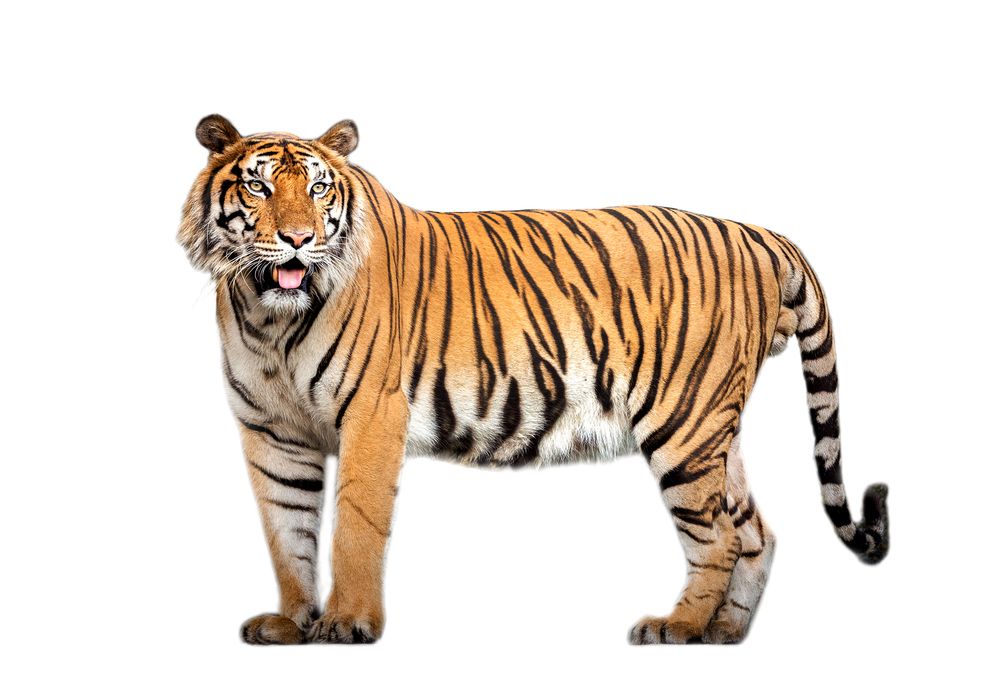
Hardly anyone comes back from a vacation in Thailand without the tin with its golden lid and the colourful sleeve with the tiger around it. In Asian countries you will encounter them at every nook and corner – on the market, at street stalls or in the boutique of your holiday resort.
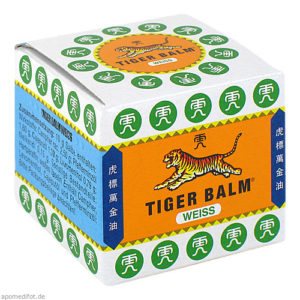 They cost almost nothing, if you compare it to western medicines. And that is exactly how the locals use the balm. It is brought to the aid of almost all ailments, each sort of tension and inflammation, also for the navel care of human and animal newborns. Tigerbalm should not be missing in any household. Also with us, it is now part of the basic equipment in the handbag of many women. Because it helps, when a sudden headache attack is announced, with itchy insect bites or to clear the nose when you have a cold.
They cost almost nothing, if you compare it to western medicines. And that is exactly how the locals use the balm. It is brought to the aid of almost all ailments, each sort of tension and inflammation, also for the navel care of human and animal newborns. Tigerbalm should not be missing in any household. Also with us, it is now part of the basic equipment in the handbag of many women. Because it helps, when a sudden headache attack is announced, with itchy insect bites or to clear the nose when you have a cold.
Monkey versus tiger
Many people think, the healing balm is originated in Thailand. But this is an error. „Tigerbalm stinks“, says my thai son-in-law. They prefer there own product „jaa-mong“, recognizable by the monkey on the packaging. It’s official name is „White Monkey Holding Peach“ balm, but mostly it is called just Monkey Balm. Its composition is similar to that of the Tigerbalm. It also consists mainly menthol, camphor and methyl salicylate, the methyl ester of salicylic acid. Beside that it also contains various types of ginger. The locals don’t just value it as a medicine. It is placed in bowls dissolved in a little hot water, to neutralise unpleasant smells in house and kitchen, or to repel mosquitoes and other insects. Warmed up in the hands, it becomes the massage palm.
Long tradition
The asian balm originally comes from chinese medicine. In China it was reserved exclusively for the emperor and his ailments.The recipe has been strictly guarded. It was always passed on by a great teacher only to his best students. This treasure of traditional chinese medicine would certainly have been forgotten, if it hadn’t handed over to the Burmese plant scientist Aw Chu Kin by accident 150 years ago. He owned in Ragoon, the capital of Myanmar (former Burma), a small shop for natural remedies. Back then, the balm wasn’t called Tigerbalm. It owes its name to Aw Chu Kin’ s sons, Boon Par, the „soft lepard“, and Boon Haw, the „soft tiger“. They took over the pharmacy after the death of their father. The golden oil – „Ban Kim Ewe“ – was first bottled in small glass bottles. Due to the great demand, the Haw Par brothers had to put their business on a more professional footing with own factories and strategic sales. The oil was renamed in „Tigerbalm“, named after Boon Haw. The tiger, the symbol of power and strength in China, became the trademark for the company and its products. It is now sold in more than 80 countries.
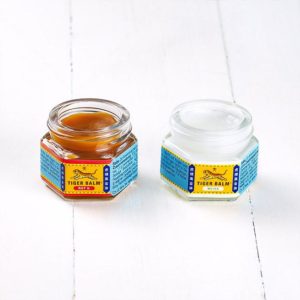 Beastly good
Beastly good
Despite the animal symbol on the can, the balm is purely vegetable. Camphor from the wood of an asian tree accounts makes 25 percent of the active ingredient combination. Added 10 percent menthol from essential mint oils, which is said to have a particularly pain-relieving effect. Also decaying cajeput oil, anti-inflammatory eucalyptus oil and invigorating cinnamon tree oil. Clove oil is only 1.5 percent contained in the white balm, because it is very strong. In the red balsam are contained 5 percent, which provide blood circulation, relax the muscles and relieve inflammation. The red one is therefore recommended for muscle inflammation and joint pain, also for arthritis and tension. The combination of camphor and menthol in the white balm is particularly effective for cold and cough. Dabbing it on temples or forehead, he develops a refreshing and pain releasing effect on headaches. By the way, there is also a green balm in Thailand with a higher concentration of menthol and camphor mixed with green herbs. It is not only used for pain relief. Dissolved in hot water should it as a massage oil also help against cellulite because its decongestant effect.
And so much more
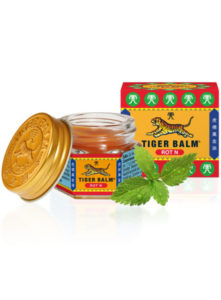
Tigerbalm can also be used in everyday activities. As a natural deodorant, menthol neutralizes the smell of sweat. Ideal for a quick refresher on the go. Swollen feet benefit from the slight cooling effect. Nausea on car or bus trips? To inhale the soothing scent of the essential oils helps immediately. Itchy mosquito bites in summer? Apply a small amount of balm thinly and the itching is gone. However, the balm should only be used on intact skin. And then wash your hands thoroughly and clean your fingernails from tiny rests of the balm. In contact with mucous membranes, the balm can burn like hell. But is not too bad, it passes soon by itself. In the meantime, you no longer have to travel to Asia to stock up on the panacea. You can get it everywhere at home in asian shops, drugstores and pharmacies. However, I personally miss there the tropical travel experience!
Leading photo: shutterstock@apple2499, Tigerbalm (4), Melanie Rüdiger (1)
chinese medicine, Monkey Balm, remedy, Tigerbalm

CultureAndCream Author from Munich
To travel during my profession as a beauty journalist was never enough for my. Also my six month on a world trip didn’t do it. It always attracts me to other cities, foreign countries, on roadtrips and places I don’t know yet. But I am not only interested in “culture” and “cream”, I am also fascinated by people who have stories to tell . Such unique experiences I want to share with you.
